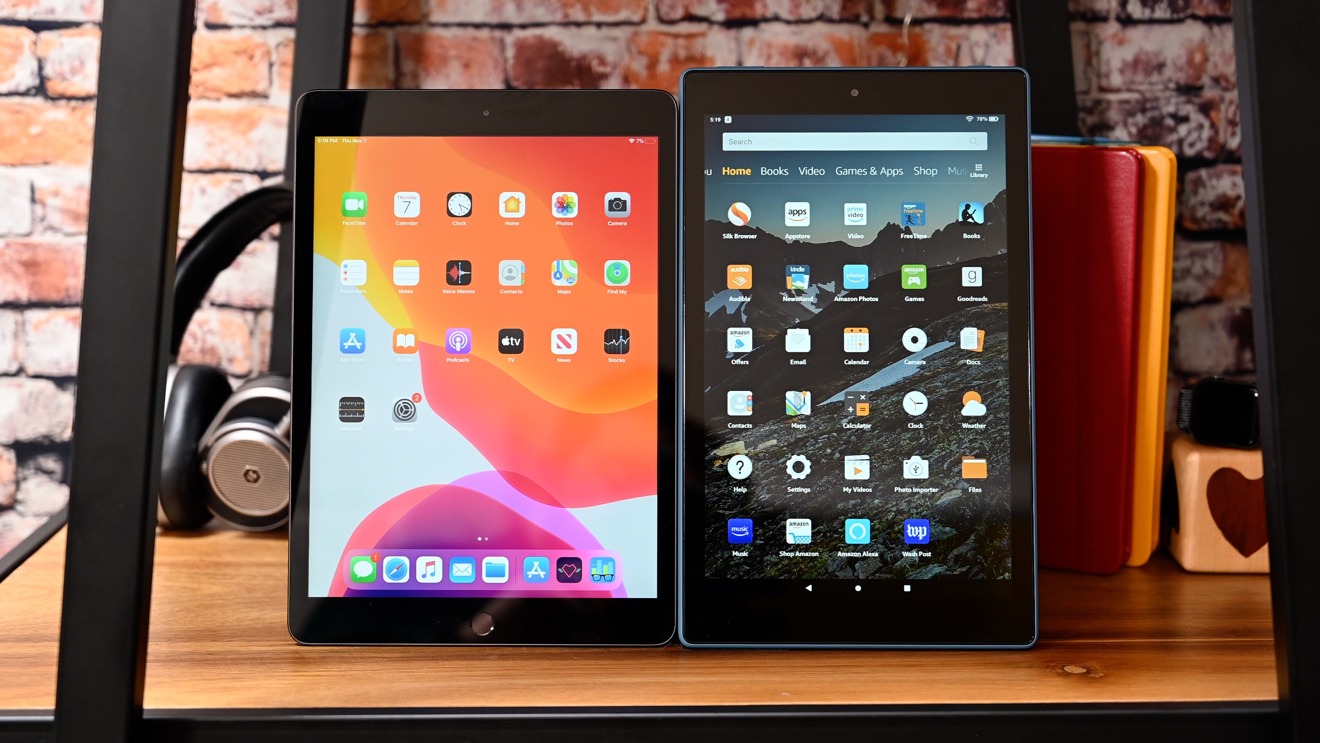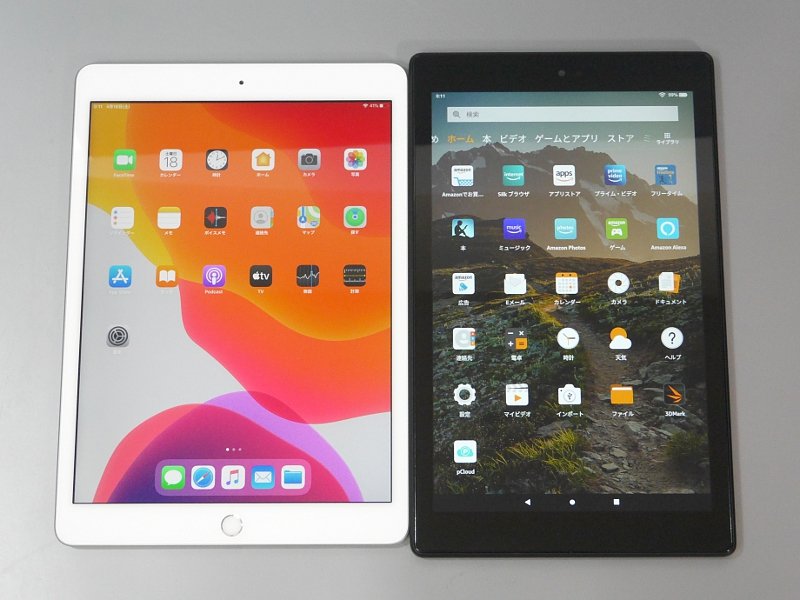

If you're seeking an affordable alternative to an iPad or Microsoft's Surface line, the Fire HD 10 Plus will serve you well. However, if you rely on productivity apps like Google Docs, they don't seem to work. Amazon's Silk browser handles some Google services smoothly, such as YouTube and YouTube TV. A front camera, also called secondary camera, can be used for video chats/selfies. So, no YouTube app or any other Google apps. A flash is good for low-light environments, and can sometimes be used as flashlight. There is also a notable absence from Amazon's marketplace: Google. But Amazon's app store is not anywhere as robust as Apple's App Store or Google Play. Why is Amazon Fire HD 10 better than Apple iPad 4 2.14x faster CPU speed 4 x 1.5GHzvs2 x 1.4GHz Has an external memory slot Has stereo speakers 220g. It has most of the big names you'd expect: Netflix, TikTok, Facebook, Hulu, Candy Crush Saga, and others. Here's the problem, and it applies to all of Amazon's tablets: you are stuck with Amazon's app store.

Amazon says you can fully charge the tablet in as little as 3.5 hours. The tablet also supports using digital assistant Alexa hands free. A display pops up with the weather, news items, recipes or other customizable details.

When paired with the charging dock, owners can not only wirelessly power up your tablet, but transform it into an Echo Show-style device. But it's important to keep in mind that these keyboards, like many aimed at tablets, can feel cramped compared to a standard keyboard for a desktop or laptop. It connects by Bluetooth, and users can detach it if they want to use the Fire HD as a traditional tablet. The Fintie case with keyboard suits the tablet well. It supports Microsoft products like Office, Teams and Skype, as well as Zoom, if you want to use it for business. IT's clearly a case of "the more you pay, the better the hardware." Also, don't worry about trying to compare the specs between iPad and Fire, you'll just get bogged down because mostly it's like comparing apples to oranges.īottom line, beyond giving you the facts, the final decision is down to you.There is potential for using your Fire 10 HD Plus beyond entertainment. When it come to technical specs such as processor speed and screen pixel density, I really wouldn't worry about it. There is an app-gap between the iPad and Fire, with iPad having the broadest range of apps on offer.Amazon does show ads on the lockscreen of the Fire tablets - it calls these special offers - and it will cost you an additional $15 to get rid of these (although personally, I don't find them intrusive).This makes the Fire a better choice for those who are less technical or have less patience or willingness to learn new things. Digital content is easier to find on the Fire tablets (it floats up right to your front screen), while on the iPad it's spread across multiple apps.For a work/BYOD setting, the iPad is likely to be better supported than any of the Fire tablets.Amazon goes as far as to tumble-test them for durability, which is handy if they're going to be dropped on the floor, sat on, and used as stakeboards by toddlers. Fire tablets are, on the whole, more robust than iPads.Amazon's Fire Kids Edition is great for youngsters, because not only do you get a cool bumper case to prevent damage, and pretty neat parental controls, but you also get a 2-year "worry-free" warranty where if the tablet gets broken, Amazon will just replace it, no questions asked.A real consideration for anyone planning to take their tablet on the road. Amazon's Fire tablets are all Wi-Fi only, while Apple offers Wi-Fi + cellular versions for all of its tablets.With Amazon, you can pop a microSD card into all the tablets to boost on-board storage (up to 200GB), plus you get unlimited Amazon cloud storage for Amazon content. With Apple, you get exactly what you pay for in terms of storage and there is no option to increase storage using a microSD card, and iCloud costs extra. Support for cool gadgets such as IoT lightbulbs and doorbells and light switches will be almost non-existent for the Fire. The accessory ecosystem for the iPad is massive, while that for the Fire will be far more modest (limited mostly to things like cases and such).If someone is already in one ecosystem or another (say they already own an iPhone, or they buy all their content from Amazon) then that will steer the choice towards one company or another.


 0 kommentar(er)
0 kommentar(er)
